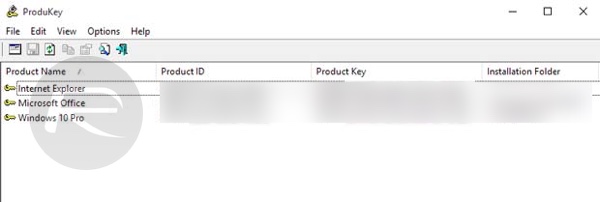Windows Pid Checker Online
The Ultimate PID Checker allows you to calculate Windows 8 / Server 2012, Windows 7 / Server 2008 R2, Windows Vista / Server 2008, Windows XP / Server 2003 and MS Office 2010 Product IDs from given keys. It can read the keys from text file and allows you to extend its functionality by loading custom pkeyconfig. Therefore, uniqueness of the product key is highly important. If you install a Windows with a product key that has already been used (read: activated), the operating system will degrade to Reduced Functionality Mode. Hence, many users wish to check their product key before they actually install the operating system.
- Windows will attempt to reinstall the driver. If you can't see the desktop and instead see a blue, black, or blank screen, see Troubleshoot blue screen errors or Troubleshoot black or blank screen errors. Check for Windows updates.
- Windows is able to tell the genuine status of a program according to various details, such as product keys or digital signatures. These, however, can become messed up and lose validation with.
- The Ultimate PID Checker is a compact and portable utility whose purpose is to verify the integrity of Windows serial numbers. You can use this tool if you are planning to reinstall your operating.
- It is free of charge. With this new PDI Checker you can also check Office 2019 licenses. For other, older PID checkers, version 2016 is the end of the check. Like all other versions, PID Key Checker 3.0.0.0 can only test Microsoft licenses that are intended for use under Windows. Software for the Apple Mac is excluded from the check.
A blog for IT professionals who work with Windows on large networks.


- Use Netstat to determine which ports to open on a ...– ComputerWeekly.com
- Last Upgrade Anticlimactic + Lessons Learned– SearchEnterpriseDesktop
- Find what each Oracle process is doing– SearchOracle
If you frequently install Windows, here’s a trick to forestall version identification and license requests during the process. As documented in a TechNet article, you must out two files in Sources to make this happen. The first is named EI.cfg, and stands for “Edition ID.” The second is named PID.txt, and supplies the product key for Windows. My guess is that PID stands for something like “Product ID.” Together, EI.cfg and PID.txt install Windows license info automatically, without requiring user input during the install process.
How Do EI.cfg and PID.txt Install Windows License Info?
I’ll provide basic info here. But you can consult TechNet for the details. The article is entitled “Windows Setup Edition Configuration and Product ID Files (EI.cfg and PID.txt).” And though it’s labeled as “…archived and … not being maintained,” it still works fine for Windows 10. At least, as of Version 1607 (production) and Insider Preview 15031 as I write this post.
Windows Pid Checker Online Shopping
Creating EI.cfg
Windows Pid Checker Online Game
Notepad or any plain text editor is what you want for both of these files, which should go into the Sources directory on the installation media. Note: you can use the tool named UltraISO to deposit them directly inside an ISO file you may have built yourself or downloaded from MS. (Note: it costs $30 but is worth it, especially if you’re using a Volume License key which needs doing only once.)
The format of the EI.cfg file is as follows:
The stuff in square brackets you leave alone, the stuff in curly braces needs replacing. For {Edition ID} use the name of the edition you’re installing (Home, Pro, Enterprise, or Education). For {Channel} the value must either be “OEM” or “Retail”. Unless you’re an OEM, that means retail. If you’re using a volume license, the value for {Volume License} must be 1, otherwise 0 (zero). That’s it!
Windows Pid Checker Online Game
Creating PID.txt
If you thought the EI.cfg file was easy — and it is — PID.txt is simpler yet. It contains two lines. The first reads “[PID]” (omit the quotes, they’re just there to show you what to type. The second reads “Value=XXXXX-XXXXX-XXXXX-XXXXX-XXXXX” where you’ll substitute an actual and valid 25-character Windows key for the string of X’s. And that’s that!